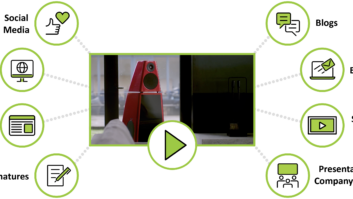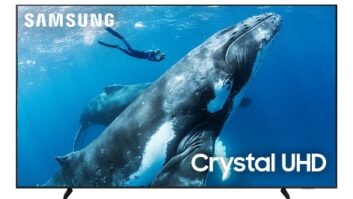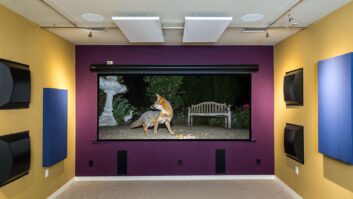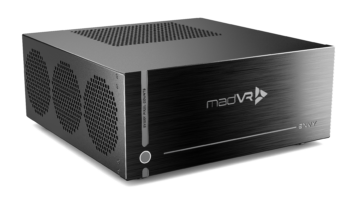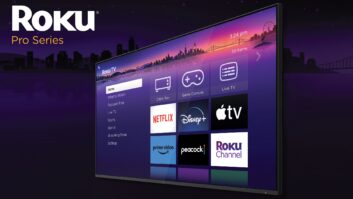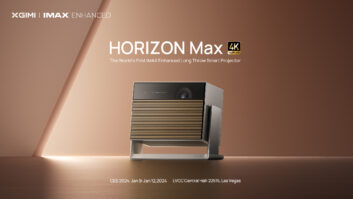One of the major trends forecasted for 2006 is the legal transport of high-quality, premium video content from stationary in-home devices (like personal video recorders) to portable media devices (like the new Apple video i-Pod and the next wave of portable media center products). The key words in this sentence are legal and premium content.
While there continue to be hacks and decrypters available to get premium content from personal video recorders and DVDs onto portable hard drives, we now are beginning to see the first business models adopted by Hollywood that legally allow the transport of their premium copyright content.
The Pay as You Go Model. The pay as you go model, so successful for the Apple iTunes music store has been extended to include the legal transport of some current TV shows and movies to the video iPod. Apples protected AAC format coupled with their iTunes gatekeeper software has given Hollywood a level of comfort that their downloaded content will receive adequate compensation for its fair use. This model is often compared with the Roach Coach Motel productscontent may always enter but it can never leave!
At CES this year Google announced a partnership with CBS that will allow for pay per view downloads of successful shows like CSI to portable devices. Unlike the Apple downloads which you can watch at anytime on the video iPod, the Google downloads of these premium shows must be watched within one 24-hour period. This is the same model adopted by the downloadable movie services like CinemaNow and MovieLink.
The Subscription Model. The monthly subscription model embraced by musical artists through online sites like Rhapsody and Yahoo is being used for the legal distribution of video content. Digital rights management formats have been established which ensure that the audio and video content on your portable device will continue to play if your monthly subscription fee has been paid. The verification of payment is accomplished via the docking of the portable device to the home network whenever content is downloaded. During the docking process a verification of the current account payment status is made. The portable content cannot be played if the monthly subscription fee has not been paid.
The Commercially Supported Model. This is the business model that has supported most broadcast television and radio for over the last several decades. With the success of personal video recorders and the new video portable players there is strong demand to move personally recorded content from the personal video recorders to these players. While Hollywood would obviously prefer a revenue stream from the replay of this content to portable devices (like those of the previous two business models) it seems inevitable that if the consumer is willing to watch advertising during the portable playback of their recorded shows that this form of video distribution will be acceptable. Products like TiVo to Go (which allow the transportation of TiVo recorded content to your computer or laptop) or the new MyTV to Go from Proxure (which can take your Microsoft Media Center recorded content and transcode and transport it to an Apple video iPod or Sony Playstation Portable, see www.mytvtogo.com) are clear examples of transcoding software that is moving video content from the personal video recorder boxes to portable players.
Why is all of this important to the CEDIA custom installer? As we begin to deploy more and more media centers in our customers homes (whether they are Microsoft Media Centers, TiVo set-top boxes, or ELAN ViaDJs for example) our clients will want to view their content not just in the home but on the road. New portable players like the Apple video iPod, Sonys Playstation Portable and the recently announced Microsoft Media Center players (like the Toshiba Gigabeat, see www.gigabeat.com) will spur demand from our clients to enjoy their digital media content whenever they are on the road. Another trend we are likely to see in the near future is that clients will acquire digital video content on their portable devices when away from home and will then want to display that content on their large format televisions when they return. Just as we have seen the whole house audio companies embrace the Apple iPod as a source for whole-house music distribution of iPod content that I would expect to see similar hardware/software bridges from home media centers to these new video content players. Why shouldnt the video content of a portable video player have direct input access to the homes media center where it could then be distributed to any audio/video zone in the home for playback?
It is clear that these new portable digital devices are becoming integral extensions to the digital home environments that we create for our clients. Having a better understanding of the legal and technical requirements associated with these devices will allow us to better design and implement digital home solutions that meet all of our clients needs whether they are at home or on the road.
Gordon van Zuiden ([email protected]) is president of cyberManor, in Los Gatos, California.
